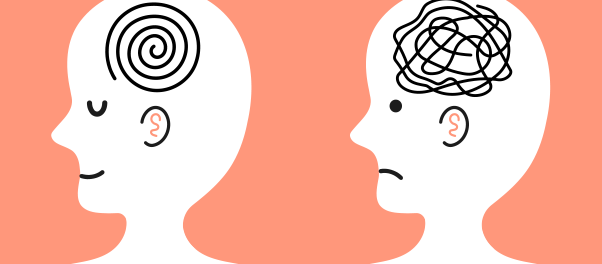Differential Diagnosis
Below are some essential considerations to help clinicians distinguish between Post-Traumatic Stress Disorder (PTSD) and other prevalent disorders.
Adjustment Disorder
In adjustment disorders, the stressor can be of any severity or type rather than a stressor involving exposure to actual or threatened death, serious injury, or sexual violence, as required by PTSD.
- The diagnosis of an adjustment disorder is used when the response to a stressor that qualifies for PTSD Criterion A (i.e., exposure to actual or threatened death, serious injury, or sexual violence) does not meet all other PTSD criteria.
- An adjustment disorder is also diagnosed when the symptom pattern of PTSD occurs in response to a stressor that is not exposure to actual or threatened death, serious injury, or sexual violence (e.g., a spouse leaving or being fired).
Other Post-Traumatic Disorders and Conditions
Not all psychopathology in individuals exposed to extreme stress should necessarily be attributed to PTSD.
- The PTSD diagnosis requires that trauma exposure precede the onset or exacerbation of pertinent symptoms.
- Other diagnoses and conditions are excluded if PTSD better explains them (e.g., symptoms of panic disorder that occur only after exposure to traumatic reminders).
- If severe, symptom response patterns to the extreme stressor that meet criteria for another mental disorder may warrant a separate diagnosis (e.g., dissociative amnesia) in addition to PTSD.
Acute Stress Disorder
Acute stress disorder is distinguished from PTSD because the symptom pattern in acute stress disorder is restricted to one day to 1 month following exposure to the traumatic event.
Obsessive-Compulsive Disorder
In OCD, recurrent intrusive thoughts meet the definition of an obsession. In addition, the intrusive thoughts are not related to an experienced traumatic event, compulsions are usually present, and other symptoms of PTSD or acute stress disorder are typically absent.
Anxiety Disorder
Neither the arousal and dissociative symptoms nor the avoidance, irritability, and anxiety of generalized anxiety disorder are associated with a specific traumatic event. Likewise, the symptoms of separation anxiety disorder are related to separation from home or family rather than a traumatic event.
Major Depressive Disorder
Major depression may or may not be preceded by a traumatic event and should be diagnosed if full criteria have been met.
- Major depressive disorder does not include any PTSD intrusion or avoidance symptoms.
- Nor does it have as many, or intense, negative alterations in cognitions and mood and marked alterations in arousal and reactivity as PTSD.
- If full criteria for PTSD are also met, a clinician may give both diagnoses.
Attention-Deficit/Hyperactivity Disorder
Both ADHD and PTSD may include problems in attention, concentration, and learning.
- In contrast to ADHD, where the problems in attention, concentration, and learning must have their onset before age 12, in PTSD, the symptoms start following exposure to actual or threatened death, serious injury, or sexual violence.
- In PTSD, the individual’s attention and concentration disruptions can be attributed to alertness to danger and exaggerated startle responses to trauma reminders.
Personality Disorders
Interpersonal difficulties that had their onset or were greatly exacerbated after exposure to a traumatic event may indicate PTSD rather than a personality disorder. Challenges attributed to a personality disorder are expected independently of any traumatic exposure.
Research has explored the overlap between psychopathy and PTSD.
Dissociative Disorders
Dissociative amnesia, dissociative identity disorder, and depersonalization- derealization disorder may or may not be preceded by exposure to a traumatic event or may or may not have co-occurring PTSD symptoms.
- When full PTSD criteria are also met, the PTSD “with dissociative symptoms” subtype should be considered.
Functional Neurological Symptom Disorder (Conversion Disorder)
The new onset of somatic symptoms within the context of post-traumatic distress might indicate PTSD rather than functional neurological symptom disorder.
Psychotic Disorders
Flashbacks in PTSD must be distinguished from illusions, hallucinations, and other perceptual disturbances that may occur in psychotic disorders.
- PTSD flashbacks are distinguished from other perceptual disturbances directly related to the traumatic experience and occur without other psychotic or substance-induced features.
Traumatic Brain Injury
Some types of traumatic events increase the risk of PTSD and traumatic brain injury (TBI) because they can produce head injuries (e.g., military combat, bomb blasts, child physical abuse, intimate partner violence, violent crime, motor vehicle, or other accidents).
- Individuals presenting with PTSD may also have TBI and vice versa.
- Individuals with PTSD who also have TBI may have persistent postconcussive symptoms (e.g., headaches, dizziness, sensitivity to light or sound, irritability, and concentration deficits). However, such symptoms may also occur in non-brain-injured populations, including individuals with PTSD.
- Whereas re-experiencing and avoidance are characteristic of PTSD and not the effects of TBI, persistent disorientation and confusion are more specific to TBI than PTSD.
- TBI-related memory problems concerning the traumatic event are typically attributable to injury-related inability to encode the information, whereas PTSD-related memory problems typically reflect dissociative amnesia.
- Sleep difficulties are common in both disorders.
Comorbidity
Comorbidity is the simultaneous presence of two or more diseases or medical conditions in a patient.
Individuals with PTSD are more likely than those without PTSD to have symptoms that meet diagnostic criteria for at least one other mental disorder, such as depressive, bipolar, anxiety, or substance use disorders. PTSD is also associated with an increased risk of major neurocognitive disorder. For example, in a U.S.-based study, women were more likely to develop PTSD following a mild traumatic brain injury (TBI). Although most young children with PTSD also have at least one other diagnosis, the diagnoses seen are different than in adults.
Additional Post-Traumatic Stress Disorder Resources
Blog Posts
Training
- Assessing Allegations of Trauma in Forensic Contexts
- Psychological Evaluation in Personal Injury and Civil Rights Cases






















